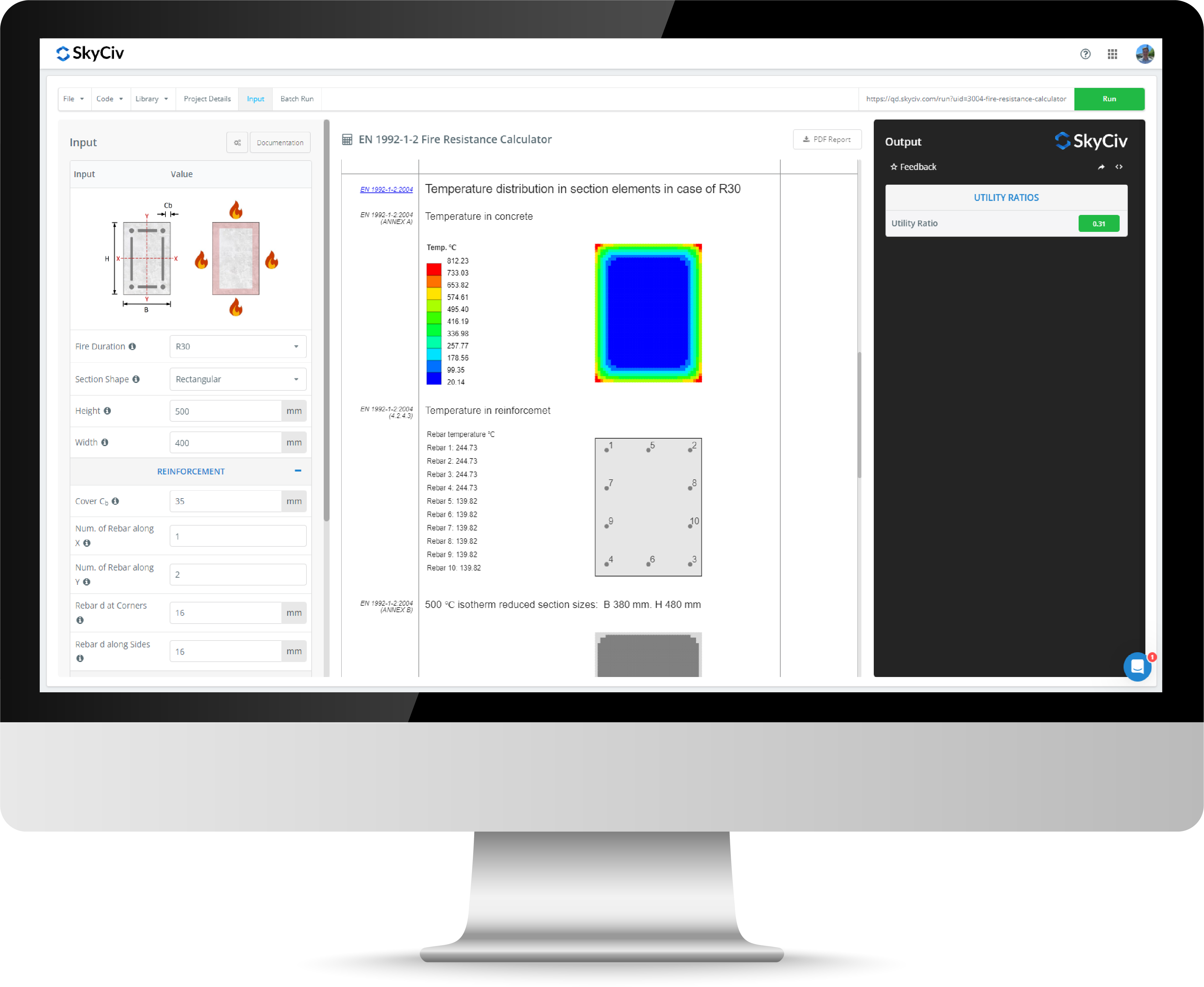Tributary Area Calculator
The following page features a detailed guide of tributary area calculations, examples, definitions and of course our fully-featured tributary area calculator. The tributary area calculator will calculate the amount of load on each element based on a one-way or two-way loading system and support both metric and imperial unit systems.
A Guide to Tributary Areas
What is Tributary Area?
Tributary area can be defined as the portion of a load that contributes load to a specific structural element, such as a beam, column, or footing. It represents the area from which loads are collected and transferred to that element. Tributary Area can be either the amount of area supported by a beam or the amount supported by a column.
Beam Tributary Area
In a simple case, if you have load on an area, the tributary area is how much of that area is supported by a specific beam element. For example, if a pressure is applied to an area, the top beam will support a certain portion of the area (represented by the purple), while the side members will support the green area:
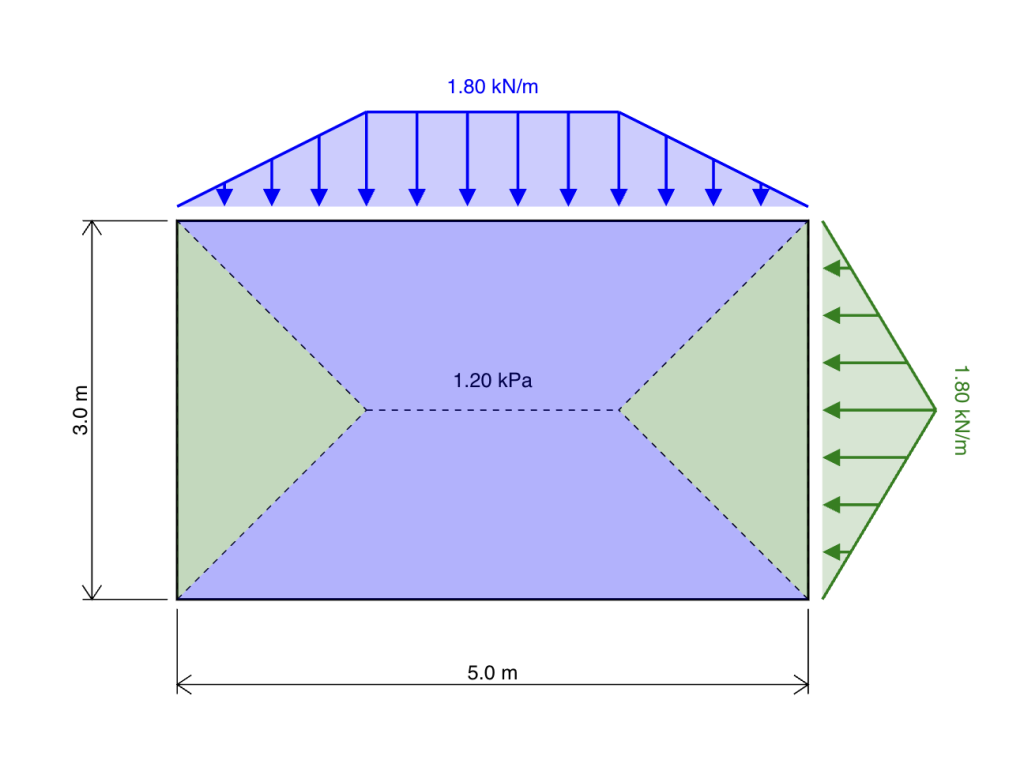
This above tributary example is an example of a two-way loading system, where the load is transferred to the beams in both directions (i.e. there is load being distributed to the horizontal and vertical members in this plan view). The calculator on this page acts as a tributary area of a beam calculator, calculating the above areas and magnitudes.
Column Tributary Area
Tributary Area can also be defined as the amount of area being supported by a column. For instance, in the below example there are four columns supporting a slab. The bottom right corner column has a tributary area of 1/4 of the slab: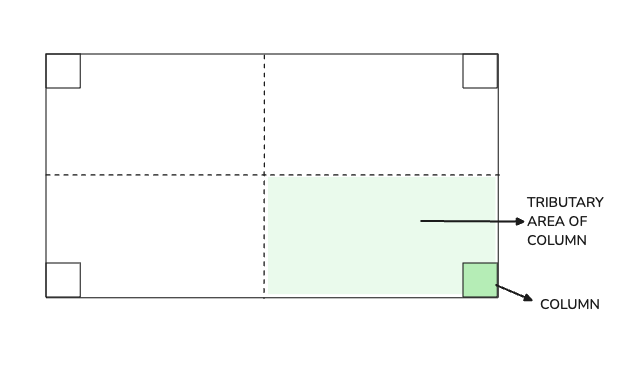
Note: This is a very simplified case and assumes there are no beams along the perimeter of the slab.
Tributary Diagram / Tributary Drawings
Tributary diagrams and drawings are given in the above diagrams. We also explore how to calculate these in the below example. They are often drawn on top of structural drawings to calculate the amount of load a particular beam needs to be designed for.
Tributary Area Example: How to calculate the tributary area of a deck (two-way loading)
Let's take a look at a simple example, a 5x3m slab with a 1.2kPa pressure Live Load applied to the slab. To calculate the two-way tributary area, we would start by drawing 45* lines from each of the corners:
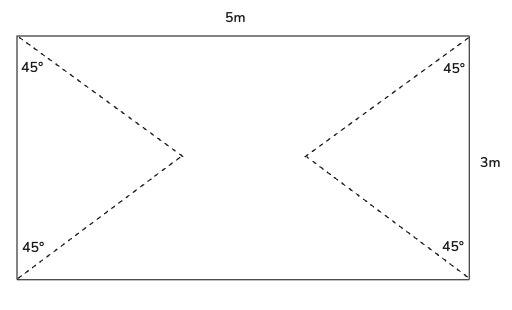
Joining those two triangles, then completes the process of dividing up the slab into tributary areas:
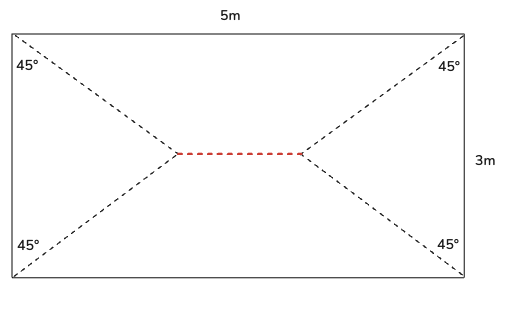
Once you have the area mapped out, use simple trigonometry to calculate the tributary areas of the left-right members:
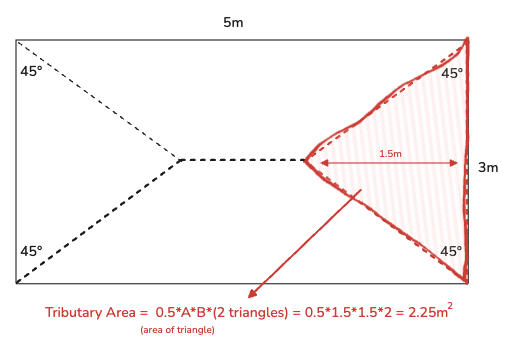
Once you have the height of the triangles, you can also calculate the tributary area of the longer beams:
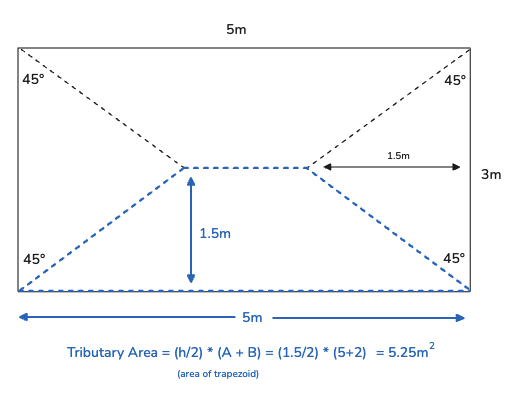
A simple check is adding all the tributary areas (2 x 2.25 + 2 x 5.25 = 15m2) and ensure it equals the area of the slab (15m2) - ensuring all the area has been accounted for.
What is a Tributary Width?
A tributary width is very similar to tributary area, however it's been simplified to just the width of the slab being supported by that particular element. This is explored in more detail in our tributary area explained article, for which the following is taken from.
Consider 3 beams supporting a load in a one-way system. The tributary width of the internal members is the amount of slab being supported by that member, which in this case is 0.75m either side of the beam. This adds to 1.5m of total tributary width:
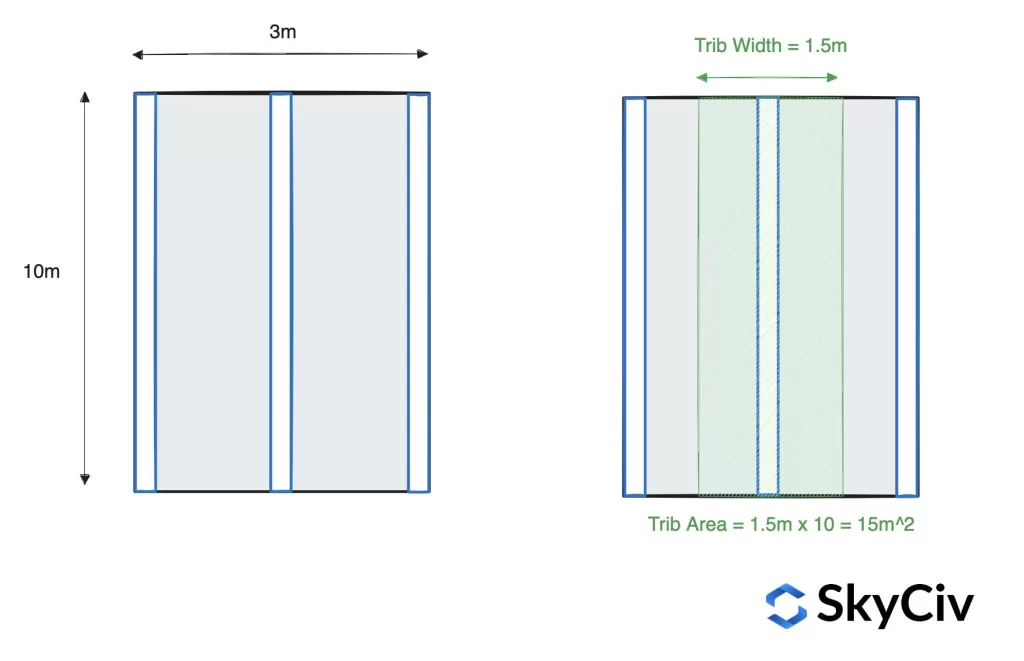
Tributary Loads
The tributary load represents the portion of a distributed load that a structural element is responsible for carrying. It is calculated as the product of the tributary width and the applied pressure:
wt = Tributary Width x Pressure Magnitude
Total Tributary Load
This section shows how to determine the total load carried by a structural element, whether it is subjected to one-way or two-way loading.
One-Way Load Type:
W = Length x Tributary Load
Two-Way Load Type:
W1 = ½ x Tributary Width x Tributary Load
W2 = (Length - Width) x Tributary Load
W3 = ½ x (Length - Tributary WIdth) x Tributary Load
Wtotal = W1 + W2 + W3
SkyCiv Quick Design Software
View our full list of quick design calculators and design software on our Quick Design page.

